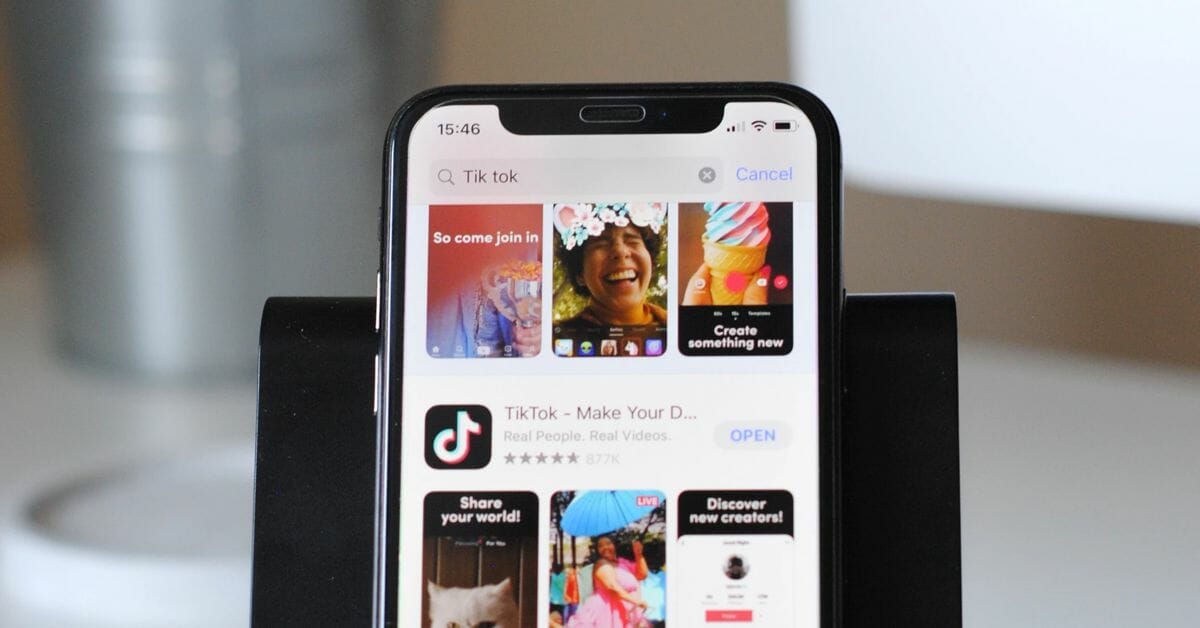If I was a gambling man, I’d bet you, the reader, are somewhere between a Boomer and Millennial. If that’s true, then I’d double down and wager that you may have watched from the sidelines but were not taking part in some of Gen Z’s trends. Some of Gen Z’s trends were, admittedly, nonsensical (need I remind you of the Tide Pod Challenge?) but most of the time they’re trailblazing, especially when it comes to tech tools and digital marketing trends. Case in point: TikTok.
So, you might be wondering then: is there any key knowledge on how to promote a law firm on social media? Well, yes. Know which platform works for you and your firm. Let’s follow this example through.
If you’re a Boomer, Generation X, or Millennial — and haven’t been living under a rock for the past two years — you’ve probably heard of TikTok. TikTok is sometimes called the “lipsyncing” app but is better known for its act-out memes that are backed by music and other sound clips. Sure, TikTok’s user base skews young — close to half of all users are between 18-24 years old and 27% of its users are between 13-17 years old — but this uber-popular social network is only trending upward and should not be ignored, especially by immigration lawyers and other legal professionals.
TikTok’s content covers everything from makeup tutorials to comedy sketches, but immigration law advice and insights are the perfect additions to the line-up. And that’s because TikTok’s potential is absolutely massive. Here’s everything you need to know about TikTok and why you should consider at least starting to explore it.
TikTok 101
TikTok first hit the US in 2018 and quickly attracted a vibrant, creative, and young audience. TikTok’s history can be traced back to 2014 in Shanghai where it started as an app called Musical.ly. TikTok’s parent company, ByteDance, considers itself an artificial intelligence company, and that’s because its extraordinarily powerful algorithm learns what content users like to see, and therefore delivers more engaging, contextual content, faster than many other apps. TikTok’s rise has been astronomical: it’s been downloaded over 2 billion times and it has 100 million monthly active users in the US alone.
But this popularity hasn’t been without its struggles.
Because TikTok is owned by a Chinese company, India and the US became openly and publicly concerned that it was collecting sensitive data from users that could be used by the Chinese government for spying. India first banned the TikTik in April 2019 (this was later overturned on appeal) and again in June 2020.
The US government has followed suit. A national security review was opened in late 2019 after lawmakers on both sides of the aisle suggested TikTok posed a national security risk. Tech experts said that TikTok’s data collection was just like other data-hungry social networks such as Facebook, but the federal government wasn’t convinced. The White House issued an executive order addressing TikTok in August of 2020 that would effectively ban the use of TikTok in the US if it didn’t get acquired by a US company. TikTok filed a lawsuit, and in late September a federal judge temporarily blocked the ban.
In the meantime, TikTok was scrambling to find a US buyer. It was in talks with Microsoft for an outright acquisition, but ultimately landed with a partnership (so not quite an acquisition) with Oracle and Walmart, where both companies would take a combined 20% stake in the company, and the app would continue its operations in the US.
Oh the drama!
But now that you’re familiar with TikTok’s backstory, let’s get into the basic description of this app.
Very simply, TikTok is an app for making and sharing short videos. TikTok video creators have a large arsenal of tools at their disposal: filters, a vast library of songs and sound bites, and access to other TikTok content. Creators are encouraged to riff off other users’ videos, creating response videos or duets (you’ll learn more about duets later in this article).
TikTok’s aggressive algorithm is constantly working to inspire its users to create more content. The app shows you dance memes, pranks and viral jokes, all of which are remade and refined by thousands of users, over and over again. Rather than feeling old or overdone, the format instead encourages mass participation.
And what makes TikTok so sticky is that you don’t need to have a single follower to have your TikTok videos shared seen by thousands across the app. Large audiences are within reach, and smaller ones are easy to find, even if you’re just experimenting. And sure, TikTok’s audience is overwhelmingly young, but there are plenty of professionals who have garnered massive followings on the app, and they are proof that TikTok is worthy of your time.
That’s right, there are already immigration lawyers using TikTok, and reaching tens of thousands of people on a daily basis. Let’s dig into this a little bit.
Immigration lawyers using TikTok
There are actually a number of immigration lawyers on TikTok, and their content ranges from silly to serious, but their videos are always informative. Let’s take a look at some of my favorite examples of lawyers using TikTok:
Known as the San Diego Immigration Lawyer, Jacob Sapochnick, or @sdimmigrationlawyer is a San Diego-based immigration attorney who has gained a following of over 174,000 followers, in addition to his 264K followers on Instagram. His videos provide information and answer questions about various visa types and comment on current immigration matters, though sometimes they are just plain fun.
Traci Chen (@migrationlawyer) is an Australian immigration lawyer who creates TikTok videos about Permanent Residency in Australia. Her short videos are usually jam-packed with valuable information and tips, but she’ll occasionally have you laughing as well.
From just one TikTok video — AND it was the very first video she posted on TikTok — lawyer Nicole M. Whitaker (@immigration.lawyer) received over 500k views, 148.5k likes, and over 1,000 comments. Nicole shares legal advice to people applying for Green Cards in the US, and her advice ranges from heartfelt to useful immigration checklists.
And then there’s Kathia Pereira, known as @inmigrandoconkathia on TikTok, who is an immigration lawyer and social media marketing guru, has already amassed over 24,000 followers with her Spanish language legal advice. Some of her videos have received more than 350k views on TikTok! Check her out to learn from a marketing pro.
And finally, my law firm, Jaskot.law, is on TikTok as well as @bmorelegal. Our account is still young, but despite having very few videos and not being on it for very long, a few of our videos have already garnered over 10K views. We definitely see the power of this platform and we’re looking forward to seeing how far we can take it.
Inspiration to get started on TikTok
You do not need to be a video editing expert to credit TikTok videos. The app has perfected the concept of short-form videos and makes video editing incredibly simple (and dare I say, fun). But where do you start when creating new videos for this app?
Take some advice from content marketing guru Gary Vaynerchuk who advises we “give, give, give, and THEN ask.” What this means is that we need to nurture and spoil our audience before asking for anything in return, like asking them to hire you. The best way to give to your TikTok audience is by creating educational (and occasionally entertaining) content that provides useful legal information. For now, your TikTok audience will likely be mostly Generation Z, so consider videos that address topics such as DACA or family-based immigration. But of course as the platform matures and more people, and corporate brands join it, just like what happened with Facebook, business-related content will become more and more relevant.
Additionally, answering questions is a great way to prove your expertise and provide value to followers and potential future clients. A great example of a lawyer who does this is Adam Juratovak (@adamjthelawyer), an employee rights lawyer based in San Jose, California. He uses his expertise in employment law to answer his followers’ questions about their rights.
Another way to gain traction on TikTok is to comment on current events and explain complex issues in lay terms. Take a look at everything from political events to pop culture happenings and explain the legal implications in a way your audience (who may not have graduated from law school) can easily understand. Lawyer Kelly Chang Rickert (@lawyerkelly) practices family law and uses this strategy to create TikTok videos that explore trending divorce articles and studies.
Lastly, one of the easiest (and funniest) ways to gain traction on TikTok is to experiment with the “duet” format. A duet on TikTok is when you create a side-by-side response to someone’s video. TikTok user @AttorneyTom, who is verified with over 12.1 million likes on his videos, has hilarious examples of this genre in action.
If you’re looking for more in-depth instructions on how to use TikTok I recommend The Verge’s guide to using TikTok or Wired’s step-by-step guide to TikTok.
Understanding TikTok is just one download away
If you don’t already use TikTok or have been avoiding it because you don’t want to use yet another social platform or because you, indeed, feel “too old” to be on it, fear not, it is possible to teach an old dog new social media tricks. TikTok may seem a little “much” but the potential for building an entirely new audience is huge!
Ultimately the best way to understand and learn TikTok is by downloading and exploring the app. And if you really want to have some fun, start practicing those dance moves and get ready to lip-sync, because TikTok fame is just one short video away!
And if TikTok isn’t your thing yet, but if you’re already on Facebook of WhatsApp and are looking to get immigration clients from there, check out YoTengoBot, an AI-powered chatbot that “understands” both English and Spanish and can have preliminary conversations with prospective clients who find you on social media and want to ask a few questions. Instead of sitting on Facebook or WhatsApp all day and monitoring, let YoTengoBot do the work for you and send qualified leads your way, while you spend all your newly freed time learning all about TikTok!
In all seriousness, if you’d like to see YoTengoBot in action, visit our site to learn more!




